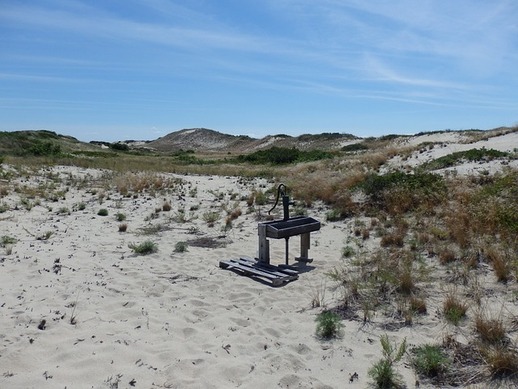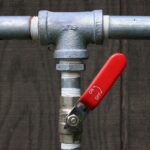
Hurricanes, with their swirling winds and torrential rains, pose a significant threat to homes and communities. One of the most pressing concerns during these powerful storms is water damage. Understanding how to safeguard your property against potential flooding and water-related issues is crucial for ensuring the safety of your family and the longevity of your home. In this comprehensive guide, we will delve into effective strategies to prevent water damage during a hurricane, offering practical and easily implementable solutions.
As hurricane seasons become increasingly unpredictable, being proactive in safeguarding your home is paramount. From reinforcing vulnerable areas to strategic landscaping, the following sections will provide you with a detailed roadmap to fortify your property against water damage during a hurricane.
See also our post on A Comprehensive Guide on Preventing Water Damage in an Urban Environment
Strengthening Your Home’s Foundation
Secure Doors and Windows:
Ensure all doors and windows are properly sealed to prevent water infiltration. Use weatherstripping and apply caulk around gaps to create a watertight seal.
Elevate Electrical Systems:
Elevate electrical outlets, switches, and circuit breakers to a level above the expected flood height. This prevents electrical damage and reduces the risk of fire hazards.
Inspect and Reinforce Roof Structure:
Regularly inspect your roof for weaknesses and loose shingles. Reinforce the roof structure with hurricane straps and bracing to withstand strong winds.
Seal Foundation Cracks:
Seal any cracks in your home’s foundation to prevent water seepage. Use epoxy or specialized sealants to ensure a durable and watertight barrier.
Install Sump Pumps:
Consider installing sump pumps in vulnerable areas, such as basements. These pumps help drain excess water and mitigate potential flooding.
Landscaping for Water Diversion
Create Sloping Terrain:
Modify your landscape to create gentle slopes away from your home. This encourages water to flow away from the foundation, reducing the risk of flooding.
Strategic Planting:
Plant native trees and shrubs strategically around your property. These plants help absorb excess water and stabilize the soil, preventing erosion.
Install Rain Barrels:
Use rain barrels to collect and divert rainwater away from your home. This simple solution can significantly reduce the amount of water pooling around your foundation.
Implement Permeable Surfaces:
Opt for permeable surfaces like gravel or permeable pavers in your driveway and walkways. These materials allow water to penetrate the ground, reducing surface runoff.
Maintain Gutters and Downspouts:
Regularly clean and maintain gutters and downspouts to ensure they are free of debris. Redirect downspouts away from the foundation to prevent water accumulation.
See also our post on A Comprehensive Guide on Protecting Your Home from Water Damage in a Desert Climate
Waterproofing Measures
Apply Waterproof Coatings:
Use waterproof coatings on exterior walls to create an additional barrier against water penetration. These coatings act as a protective shield during heavy rainfall.
Seal Basement Windows:
Ensure basement windows are properly sealed with weather-resistant materials. This prevents water from entering vulnerable areas and causing structural damage.
Invest in Flood Barriers:
Consider installing temporary or permanent flood barriers around entry points. These barriers provide an extra layer of protection against rising water levels.
Elevate Appliances and Utilities:
Elevate appliances, such as water heaters and HVAC systems, above potential flood levels. This prevents water damage to essential utilities and reduces the risk of costly repairs.
Install Backflow Valves:
Place backflow valves on sewage and drainage pipes to prevent floodwater from backing up into your home. These valves ensure that water flows in one direction only.
Emergency Preparedness
Create an Emergency Kit:
Assemble a comprehensive emergency kit with essentials such as non-perishable food, water, medications, and important documents. Be prepared for potential evacuation.
Develop a Family Emergency Plan:
Establish a clear and concise family emergency plan. Include evacuation routes, emergency contacts, and a designated meeting point in case of separation.
Stay Informed:
Monitor weather updates through reliable sources to stay informed about approaching hurricanes. Follow evacuation orders promptly to ensure your safety.
Secure Outdoor Furniture:
Store or secure outdoor furniture and objects that could become projectiles in strong winds. This minimizes potential damage to your property and neighboring structures.
Test Backup Power Sources:
Ensure generators and other backup power sources are in working order. Test them periodically to guarantee they will function during power outages.
Insurance Coverage and Documentation
Review Home Insurance Policy:
Regularly review your home insurance policy to understand coverage related to water damage and hurricane-related incidents. Consider additional coverage if necessary.
Document Belongings:
Create a detailed inventory of your belongings, including photographs and descriptions. This documentation is invaluable for insurance claims in the aftermath of a hurricane.
Protect Important Documents:
Store important documents, such as passports and insurance policies, in waterproof containers. Keep digital backups to ensure access in case physical copies are damaged.
Understand Policy Limits:
Familiarize yourself with the limits of your insurance policy, especially in terms of coverage for temporary housing and additional living expenses during repairs.
See also our post on Top Water Damage Restoration Procedure
Contact Insurance Provider Early:
In the event of water damage, contact your insurance provider as soon as possible. Prompt communication facilitates a smoother claims process and ensures timely assistance.
Post-Hurricane Inspection and Repairs
Thoroughly Inspect for Damage:
After a hurricane, carefully inspect your home for any signs of water damage. Look for leaks, dampness, and structural issues that may have occurred during the storm.
Address Water Intrusion Promptly:
If water damage is detected, address the issue promptly. Remove standing water, dry affected areas, and disinfect to prevent mold growth and further structural damage.
Consult Professionals for Repairs:
Engage professional contractors for thorough inspections and repairs. Ensure that all repairs are conducted in accordance with local building codes and regulations.
Test Electrical Systems:
If water has come into contact with electrical systems, have them inspected by a qualified electrician. Do not attempt to use appliances or outlets until they are deemed safe.
Monitor for Mold Growth:
Keep a vigilant eye for signs of mold growth in the aftermath of water damage. Address any mold issues promptly to safeguard your family’s health.
Conclusion
As a result, protecting your home from water damage during a hurricane necessitates a combination of proactive measures, strategic planning, and prompt responses. You can substantially lower the risk of water-related issues by strengthening the foundation of your home, putting landscaping strategies into place, and investing in waterproofing measures. Emergency preparedness, insurance coverage, and post-hurricane inspections round out the comprehensive approach required to protect your home and loved ones. Recall that resilience is all about being prepared and having a proactive mindset, which will guarantee that your home is a safe haven even in the face of nature’s most formidable challenges.






